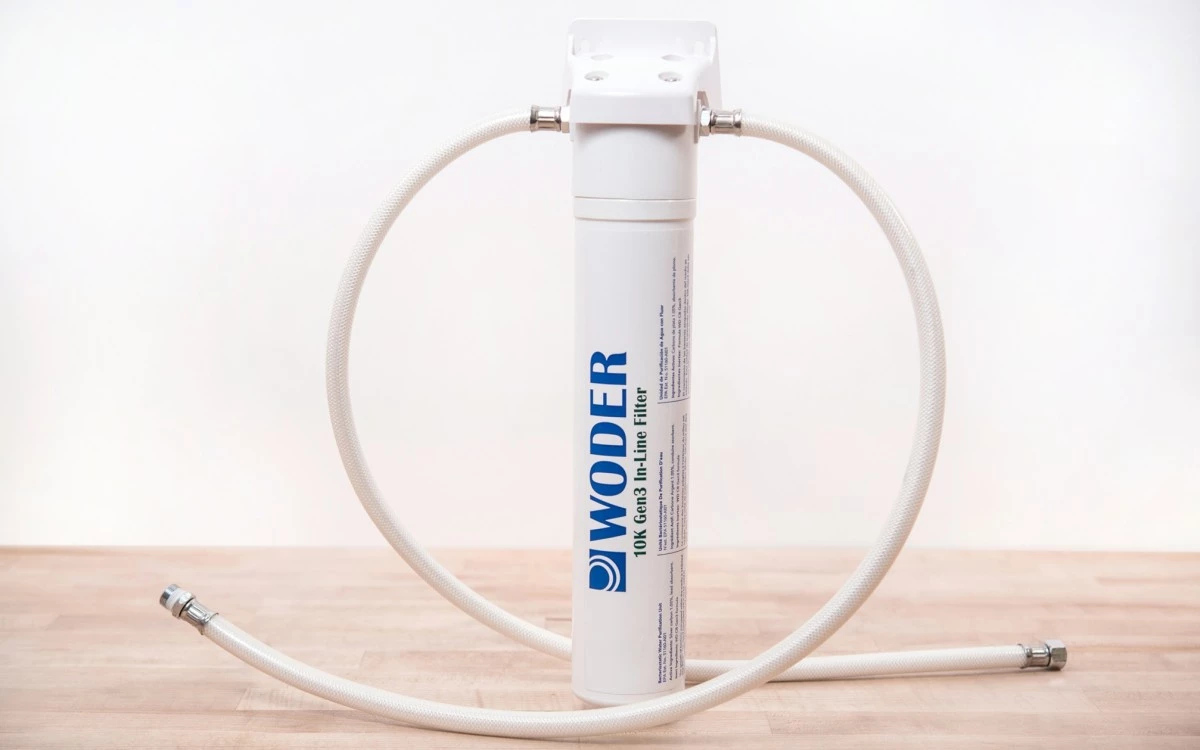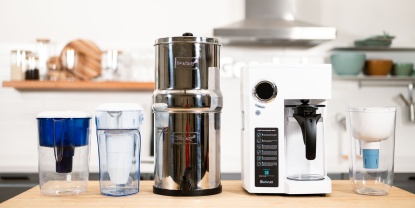Woder 10K-Gen3 Review
Our Verdict
Our Analysis and Test Results
The Woder finished in the middle of the group, right behind the Brita SAFF-100. However, the SAFF-100 was far superior in our tests at extracting lead and chlorine from water. Neither of these filters did very well at extracting minerals from the water or made water that tasted particularly great. The SAFF-100 also usually retails for about a third of the cost of the Woder, making it much more desirable in our opinion.
Lead Removal
The 10K-Gen3 didn't get off to a good start with this metric, delivering a substandard performance in our tests and earning a 4 out of 10. We evaluated this by running water with very high levels of lead through each filter, then sending the filtered water off to an independent lab for analysis.
This lab found that our supply water had lead concentrations of around 2.3 ppm — significantly higher than the 0.015 ppm deemed allowable by the EPA. The Woder removed about 93% of the lead, but failed to meet the standard, with lead levels about 10 times higher than the allowable amount in the filtered water, as measured by the lab.
Chlorine Removal
The Woder 10K fared much better in our chlorine removal tests, earning a 7 out of 10 for its solid performance. We made two batches of chlorinated water, one with very high levels of chlorine and one with much more moderate levels, then used indicator strips as well as an electronic meter to assess how much chlorine each filter removed.
The Woder didn't do very well with the highly chlorinated water, with the test strips still maxing out when measuring the filtered water. However, the Woder did remove all of the chlorine from the less chlorinated water, with the strips failing to indicate anything.
Salt Removal
Unfortunately, the Woder's performance plummeted in this metric, with this filter failing to remove any of our sample salt. Consequently, this filter earned a 1 out of 10 due to its performance in this test. We used table salt, dissolving it into the water supply for our filters until our meter registered levels of about 445 ppm. After running it through the Woder, we measured the filtered water, finding that the concentration remained unchanged.
Taste
The Woder continued its lackluster performance in our taste tests, delivering a mediocre showing in each of the assessments in this metric, earning it a 4 out of 10.
For the first test, we used already purified water for the supply of the filters, then had a panel taste the water after it had been filtered by the Woder. This was to see if the Woder added any unpleasant or unsavory flavors. It did, making clean water taste a bit stale and generally unpalatable to our water tasting judges.
Next, we made a batch of exceptionally undrinkable water using chlorine bleach and salt, then ran it through the 10K-Gen3. It did improve the flavor a decent amount, but definitely didn't improve the test of the water to a level our panel considered to be drinkable.
Flow
The Woder actually has one of the highest flow rates of the group, earning it top marks and a 10 out of 10. To determine scores, we timed how long it took the Woder to fill up a 1-quart vessel. The Woder only took about 12 seconds — just a little bit more time than the standard faucet's 9 seconds.
Value
While this is one of the least expensive under the sink filters we have tested, it isn't an amazing value, as we found its performance in our tests to be disappointing overall compared to competitors we tested.
Conclusion
The Woder 10K-Gen3 is not a water filter we'd recommend to a friend unless their primary interests were in fast flow rate and filtering out chlorine, the two areas in our tests in performed very strongly versus competitors.






